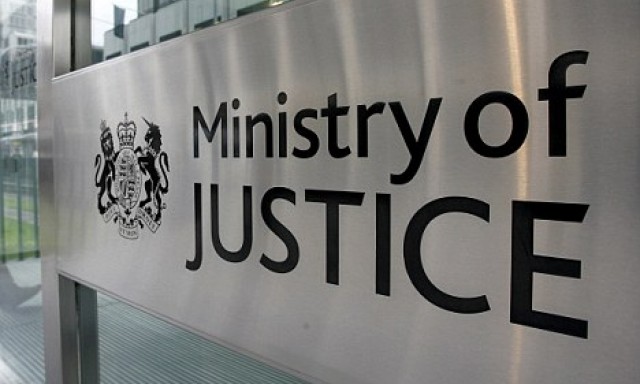The Ministry of Justice released the final version of the new pre-action protocol for debt claims on 21 March 2017 (Pre-Action Protocol for Debt Claims—in force 1 October 2017). It will come info force on 1 October 2017. Business creditors will need to revise their pre-action processes to ensure that they are compliant with the new procedure.
What are the practical implications of this development?
The current pre-action position for parties dealing with a debt claim is that they need to follow the general principles set out in the Practice Direction Pre-Action Conduct and Protocols, as there is no other specific protocol for debt claims.
From 1 October 2017, where a business (including a sole trader or public body) is claiming payment of a debt from an individual (including a sole trader), the new protocol will apply and parties will need to comply with its provisions prior to commencing a claim.
Business creditors will need to revise their pre-action processes to ensure that they are compliant with the new procedure with effect from 1 October 2017.
To see the new protocol, click here:
Pre-Action Protocol for Debt Claims—in force 1 October 2017
All references below are to this final version.
Why is the protocol being introduced?
The necessity for a debt pre-action protocol was initially raised by Lord Justice Jackson in his Final Report on Civil Litigation Costs published in January 2010, on the grounds that debt claims ‘constitute a huge swathe of business of the courts’ and needed their own specific protocol (see para [6.3] of the report).
Following this recommendation, a CPR sub-committee was set up to consider the pre-action protocols and a new debt protocol was produced. Following a lengthy consultation process, the final version of the protocol was approved by the Civil Procedure Rule Committee (CPR-C) on 9 December 2016 and a final version released by the Ministry of Justice on 21 March 2017. The core principal of the new protocol is that debtors (or alleged debtors) should be provided with sufficient information to enable them to obtain advice on their position prior to the issue of a claim and that, if possible, the parties should attempt to resolve the dispute without the need for court proceedings.
When will the new protocol apply?
Pre-Action Protocol for Debt Claims, para 1.1
The protocol will only apply where a business (including a sole trader or public body) is claiming payment of a debt from an individual (including a sole trader). The protocol does not apply to business-to-business debts unless the debtor is a sole trader.
The new protocol will come into force on 1 October 2017 but it is not yet known what transitional provisions (if any) will be put in place. Since 6 April 2015, when the Practice Direction Pre-Action Conduct and Protocols came into effect, debt claims of this nature have been governed by this Practice Direction.
What are the key provisions of the new protocol?
The protocol aims to encourage early engagement and communication between the parties, including early exchange of information to enable the parties to resolve the matter without the need for court proceedings if possible, and to encourage the parties to act in a reasonable and proportionate manner.
The protocol includes a two step pre-action process in which the creditor only has to supply to the debtor certain information and documentation concerning the debt, with provision for the debtor to require further information if needed. In this way, where the debtor does not respond at all, the creditor will not incur the cost of providing the further information.
Letter of claim
Pre-Action Protocol for Debt Claims, para 3
The initial step is for the creditor to send a letter of claim to the debtor before proceedings are started, which contains the information set out in para [3] of the protocol, together with an information sheet and reply form (both set out in Annex 1) and a standard financial statement form for the debtor to complete, showing his/her current financial situation (an example of which is set out in Annex 2). The letter of claim must include:
- information about the debt and any interest or other charges
- details of the agreement under which the debt arises
- details of any assignment of the debt
- details of any installments that are currently being offered/ paid and an explanation of why the offer is not acceptable and why a claim is still being considered
- details of how the debt can be paid and how to proceed if the debtor wishes to discuss payment options
- the address to which the completed reply form should be sent
Pre-Action Protocol for Debt Claims, para 3.1(b)
The creditor must also enclose an up-to-date statement of account for the debt, which includes details of interest or other charges added or, where one is not available or is not up-to-date, must state in the letter of claim the amount of interest incurred and any other charges imposed since the debt was incurred or since the last statement of account was issued.Pre-Action Protocol for Debt Claims, para 3.2 and 3.3
The letter of claim must be dated and posted on the same day or following day. The protocol makes provisions in para [3.3] for other methods of communication.Pre-Action Protocol for Debt Claims, para 3.4
The debtor has 30 days to respond, before proceedings may be commenced.
Response by the debtor
Pre-Action Protocol for Debt Claims, para 4.1
The debtor should complete the reply form sent by the creditor (Annex 1) and can request copies of relevant documents.Pre-Action Protocol for Debt Claims, paras 4.2 to 4.4
The creditor cannot commence proceedings until, the earliest, 30 days from receipt of the completed reply form. This period may be extended if the debtor indicates that they are seeking debt advice, requests further documentation or requires more time to pay.Pre-Action Protocol for Debt Claims, para 4.4
The parties are also required to try and reach agreement for payment by installments, based on the debtor’s income and expenditure and having regard to the financial statement completed by the debtor. Any refusal by the creditor of a debtor’s proposal for repayment should include written reasons.Pre-Action Protocol for Debt Claims, para 4.5
The creditor should attempt to contact the debtor to discuss the reply form and obtain any further information needed to understand the debtor’s position.
Disclosure of documents
Pre-Action Protocol for Debt Claims, para 5.1
The parties are encouraged to disclose documents and exchange relevant information to help clarify or resolve the dispute.Pre-Action Protocol for Debt Claims, para 5.2
The creditor has 30 days to supply requested documentation or, if the document/information is unavailable, to explain why.
Settlement/alternative dispute resolution (ADR)
Pre-Action Protocol for Debt Claims, para 6
The parties are encouraged to consider ADR if they are unable to resolve the dispute, but are warned to take into account the potential costs of mediation (if this is the chosen method) as against the amount of the debt.Pre-Action Protocol for Debt Claims, para 6.4
If agreement is reached, the creditor should not start court proceedings while the debtor complies with the agreement. If court proceedings become necessary at a later date, an updated letter of claim must be sent and the protocol will need to be complied with afresh. However, documentation regarding the debt does not need to be re-sent if it has been provided in the preceding 6 months, unless it requires updating.
Compliance with the protocol
Pre-Action Protocol for Debt Claims, para 7
If proceedings are commenced, the court will take into account non-compliance with the protocol when giving directions, but the court is not likely to be concerned with minor or technical infringements, especially when the matter is urgent. Parties should also bear in mind paras [13]–[16] of the Practice Direction Pre-Action Conduct and Protocols as regards compliance.
Taking stock
Pre-Action Protocol for Debt Claims, para 8.1
The protocol includes a ‘taking stock’ provision which requires the parties, following compliance with the protocol, to
undertake a review of their respective positions to see if proceedings can be avoided and, at the least, to narrow the issues between them.”
Pre-Action Protocol for Debt Claims, para 8.2
Where a letter of claim and reply have been filed but agreement has not been reached, the creditor must give the debtor at least 14 days’ notice of its intention to start court proceedings, unless there are exceptional circumstances in which urgent action is required (for example, because the limitation period is about to expire).








Leave A Comment